Soc Trang lays out strategy for seaport’s special renovation
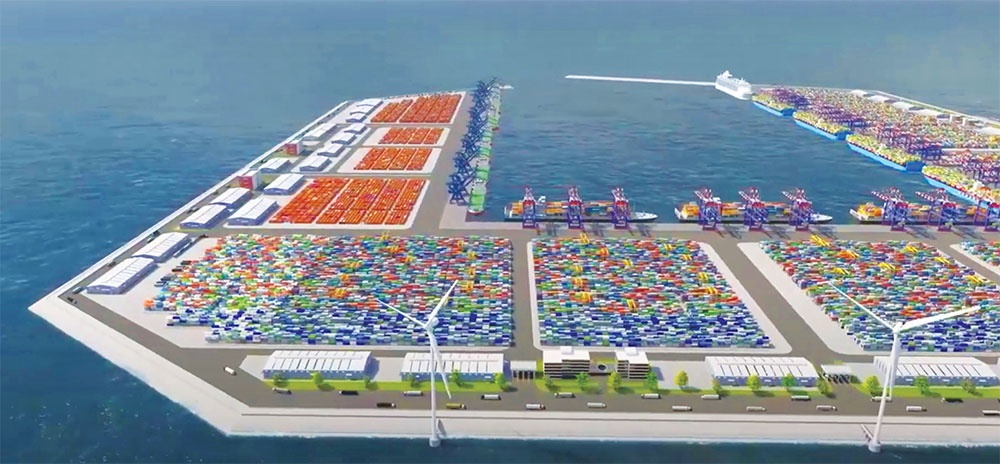 |
| Becoming a stellar regional gateway is the goal for Tran De Seaport |
In August, the master plan was approved for Soc Trang province’s development direction for the rest of the decade and with a vision to 2050.
Soc Trang is becoming one of the more well-developed provinces of the Mekong Delta. It develops industry, commerce, services, and modern and sustainable agriculture. It also wants to completely transform Tran De Seaport with a comprehensive and modern infrastructure system.
Under the master plan, Soc Trang is oriented to develop its seaport system, with priority on attracting investment and building and developing Tran De into a regional gateway.
The orientation is in line with a 2022 resolution on socioeconomic advancement to ensure national defence and security in the Mekong Delta, and accompanying documents.
In July, a national plan was also approved on policies, solutions, and resources for implementation of Vietnam’s seaport system development towards 2030 and beyond. To develop maritime infrastructure, it identified the importance of calling for investment for Tran De, with an expected investment capital of around $2 billion.
After the transformation, aimed to take place by the end of the decade, the port will have capacity to receive general ships and container ships of 100,000DWT or more, and bulk cargo ships of 160,000DWT. In addition to the port, there will also be a port logistics service area of around 4,000 hectares.
Tran Van Lau, Chairman of Soc Trang People’s Committee, said, “These orientations and policies have laid important political and legal foundations to form Tran De as a gateway seaport for the Mekong Delta region. It is a perfect piece of the puzzle to synchronise transport infrastructure, directly promoting the socioeconomic development of the region.”
He added that Soc Trang is actively working with the Ministry of Transport to complete and submit the plan on attracting investment into Tran De Seaport.
“The province also plans other functional areas, including industrial, commercial, service, and logistics, to connect with key traffic projects, especially Chau Doc-Can Tho-Soc Trang Expressway and the seaport,” Lau said.
Creating a breakthrough
The Mekong Delta is a key agricultural region of Vietnam with many key products, especially rice, shrimp, basa fish, and fruit. The total annual import and export volume of the Mekong Delta is about 21-22 million tonnes, counting for 95 per cent of the total rice export and 65 per cent of basa exports. However, less than 10 per cent of goods goes directly through the region’s seaports, and there is no gateway port for the region to accommodate large tonnage ships.
More than 70 per cent of the region’s import and export goods have to be transshipped to the port cluster in the Southeast region. As a result, transportation costs increase by about $10 for each tonne of imported and exported goods. It not only takes a lot of time and affects the quality of goods, but also places pressure on road traffic.
Therefore, it is vital to plan and call for investment for the gateway port of the Mekong Delta at Tran De, which will facilitate the export and import activities of the entire region.
Ho Quoc Luc, chairman of Sao Ta Foods JSC, expressed his delight when hearing about the master plan for Tran De project.
“The planned seaport will support our business activities. Over the past 27 years, the company has transported its goods to seaports in Ho Chi Minh City and Ba Ria-Vung Tau and suffered higher logistics costs. The company exports 1,500-2,000 refrigerated containers per year. With the planned Tran De overhaul, the company can save over $822,000 for its logistics expenses.”
Compared with road transport, it helps ease the risks of traffic congestion and other transport issues, which delay the shipment, cause damage to business activities, and affect partners’ trust, according to Luc.
The development of Tran De Seaport not only removes the bottlenecks in import and export activities but also creates a premise to lure more investment into the industry, thereby creating a breakthrough for the entire region.
Nguyen Van The, Secretary of the Party Committee of the Central Agencies’ Bloc, said, “The Mekong Delta relies on agriculture but has yet to develop efficient industry due to the incomplete expressway system, especially the gateway seaport. It is hard to woo investment to form industrial zones (IZs) and clusters.”
Once Tran De is fully developed, IZs and clusters will be formed in the surrounding areas within the distance of 50-70km of the seaport. Therefore, the implementation of Tran De will have a tremendous socioeconomic impact, Van The explained.
“It is vital to accelerate the development of Tran De Seaport with drastic measures. The government must make large investments to make this seaport viable. Without it, it is impossible to create breakthroughs for the Mekong Delta,” he said.
“At first, the throughput via Tran De will be agricultural and aquacultural products. In the next decades, industrial products will be the main throughput for the seaport, which comes from future IZs and clusters in the region,” he said. “With such economic efficiency, the government is willing to fund half, or even 70 per cent, of the project to invest in wharves, breakwaters, and some other infrastructure for investors to do business effectively.”
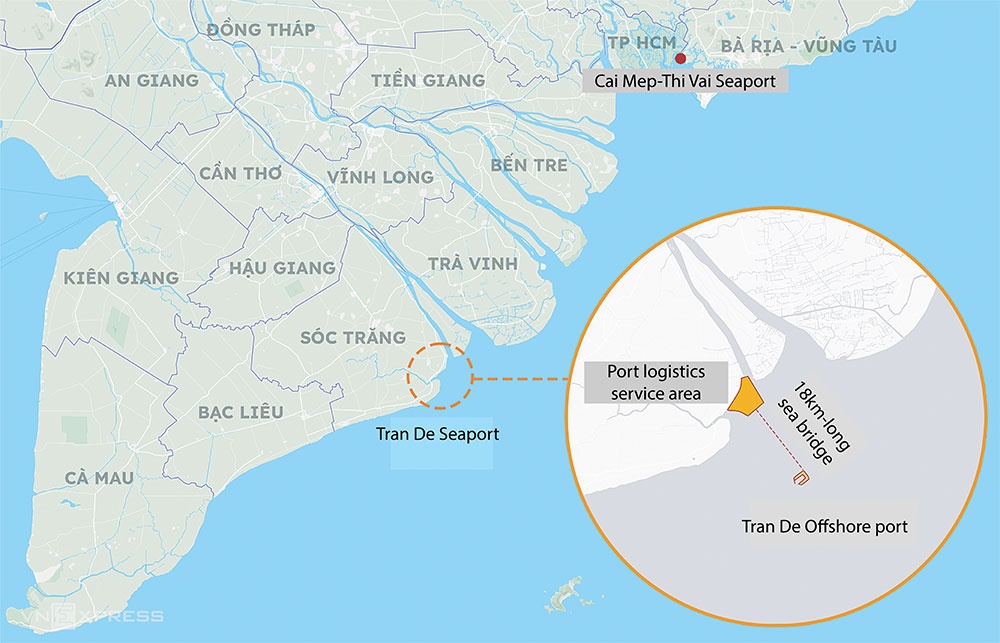 |
| Tran De Seaport will be completely overhauled, meaning new services and a much wider scope |
Encouraging relocation
Luc of Sao Ta Foods cited statistics showing that Vietnam exports 6-7 tonnes of rice per year and nearly one million tonnes of seafood from processing factories in the Mekong Delta. With the development of Tran De, more IZs will be developed in the western provinces to reduce costs for sourcing raw materials. It also boasts proximity to the labour area.
“There is huge potential to increase throughput for the seaport. It means the investment effectiveness will increase gradually over time,” Luc said. “About one million tonnes of shrimp are produced in Vietnam each year. It requires 1.5 million tonnes of shrimp feed, most of which is imported. To produce 1.5 million tonnes of basa fish, it needs two million tonnes of feed. If there is a seaport in the region, it is possible to source feed from the western provinces.”
This will encourage food producers to relocate their factories to the region to reduce logistics costs for feed transportation and lower prices for finished products. Even labour-intensive outsourcing suppliers with the demand to import materials will relocate to the region if the seaport is in place, he shared.
Pham Thai Binh, general director of Trung An JSC explained, “About 40 per cent of transhipment costs can be saved when transporting goods from the Mekong Delta provinces to Tran De rather than ports in Ho Chi Minh City greater area. The rate would be even more for fisheries and fruits, saving millions of dollars for both consumers and businesses.”
The scale of Tran De is carefully calculated in the master plan to realise its role as a gateway seaport for the Mekong Delta. The seaport will also act as a transhipment destination for the import and export of goods from Cambodia and other Mekong Sub-Region countries along inland waterways. It also facilitates the transshipment of imported coal to power centres in the delta.
The project will handle 30-35 million tonnes of cargo annually by 2030, with a capacity to increase to 80-100 million tonnes of cargo.
At a conference on the development of Tran De Seaport in August, Nguyen Xuan Sang, Deputy Minister of Transport said, “Investment in the Tran De project is the optimal choice to unlock the development of the Mekong Delta region. Like other ports, Tran De will be funded mainly with corporate funding. However, the government will also invest in public infrastructure network.”
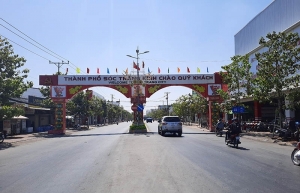 | Soc Trang to host major investment promotion conference The Soc Trang investment promotion conference focused on cooperation and development is scheduled to take place at the province’s Culture and Conference Centre on April 29. |
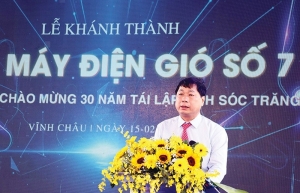 | Soc Trang to accompany all investors The Mekong Delta province of Soc Trang will be hosting a major investment promotion conference on April 28. To mark the occasion, Lam Hoang Nghiep, Deputy Chairman of Soc Trang People’s Committee, talked with VIR’s Huu Phuc about the local potential in its strategy for investment attraction and development. |
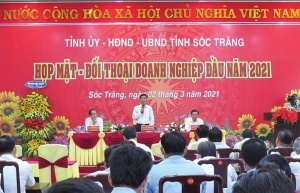 | Soc Trang province looks to prosper by leaps and bounds A raft of forthcoming infrastructure projects will lay concerted groundwork for Soc Trang province to break through and become one of the most vibrant commercial and industrial hubs in the Mekong Delta region. |
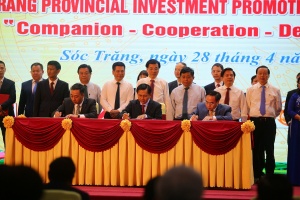 | Soc Trang lures over $8.7 billion in committed investment capital Soc Trang has recently granted investment certificates for four projects and signed 18 MoUs on investment study and surveys with the total registered capital of more than $8.7 billion. |
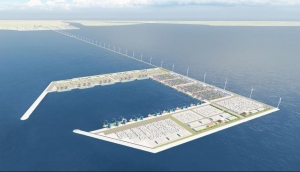 | Soc Trang seeks feasibility report on Tran De Seaport Soc Trang People’s Committee is proposing developing Tran De Seaport under a Public-Private Partnership (PPP) and, to promote the venture as an investment opportunity, is seeking the Ministry of Transport’s approval to use local budgetary funds to draft a feasibility report for its construction. |
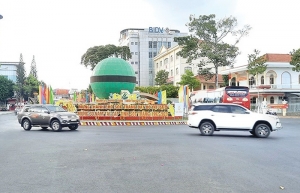 | Soc Trang takes on gateway mantle Soc Trang is making efforts to become a well-developed province in the Mekong Delta, with the modern and sustainable development of manufacturing, commerce, and services this decade. |
What the stars mean:
★ Poor ★ ★ Promising ★★★ Good ★★★★ Very good ★★★★★ Exceptional
Related Contents
Latest News
More News
- Global partnerships key to Vietnam’s IFC development (December 26, 2025 | 16:18)
- Vingroup pulls out of bid to invest in North-South high-speed railway (December 26, 2025 | 11:42)
- Strengthening supply chains through trade promotions and customs reform (December 24, 2025 | 14:00)
- PM orders investment model for North–South high-speed rail (December 22, 2025 | 17:43)
- LS Eco Energy to invest in Vietnam rare earth sector (December 22, 2025 | 17:31)
- Government moves to establish International Financial Centre (December 21, 2025 | 21:00)
- Vietnam's IFC to target global investment flows (December 21, 2025 | 18:00)
- Two national hospitals expand capacity with new facilities (December 20, 2025 | 09:00)
- Ha Tinh breaks ground on major Vingroup industrial and energy projects (December 19, 2025 | 18:24)
- EVN launches major power infrastructure projects nationwide (December 19, 2025 | 18:17)

 Tag:
Tag:





















 Mobile Version
Mobile Version